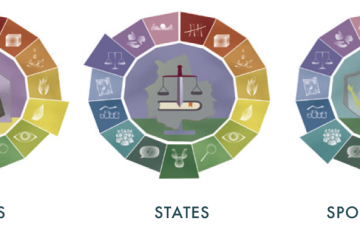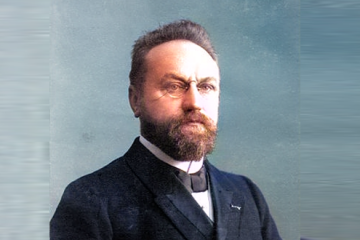This is an adapted and abridged version of a sermon I gave at evensong in the chapel of Hertford College, last February on the feast of Candlemas.
‘Now there was a man in Jerusalem, whose name was Simeon, and this man was righteous and devout, waiting for the consolation of Israel, and the Holy Spirit was upon him. […]
And there was a prophetess, Anna, the daughter of Phanuel, of the tribe of Asher. She was advanced in years… She did not depart from the temple, worshiping with fasting and prayer night and day.’
(Luke 2)
Christmas is almost upon us – but today let’s skip ahead a little in the narrative we retell at this time every year. After Jesus was born, Luke tells us, his parents took him to Jerusalem to be presented at the Temple: the equivalent, perhaps, of a christening or a dedication, the important but routine introduction of a child into the religious customs of his community.
This might have been a fairly unremarkable event, but in God’s perfect dramatic timing, we are given a beautiful, strange, startling account of joy: not just the happiness of new parents or a special family event, but the joy of two people, Simeon and Anna, who have been waiting, and waiting, and waiting – and realise that what they have been waiting for is finally here.
Hope deferred
Anna is in her early eighties, and Simeon also seems to be nearing the end of his life. They are expecting the arrival of the Messiah – the ‘consolation of Israel’, the ‘redemption of Jerusalem’ – and have been doing so for some time. Anna has been praying and fasting for most of her life, a way of life which implies expectation. Simeon has received a promise from God which he is waiting to see fulfilled, but time seems to be running out.
Their hopes must have seemed hollow at times. The Jewish people had been promised God’s consolation hundreds of years before, but were under an oppressive empire with no prospects of getting out. Simeon and Anna must have felt disappointment, impatience, even doubt over the years, when they saw no sign of what they were longing for.
This is what we have to keep in mind when we see Simeon taking the child in his arms, and breaking out into poetry; when we see Anna rushing off to tell others, praising the God she had waited on all her life. This is the very heart of what it means that Jesus was born on earth: a ‘turn’ from disappointment and expectations long unmet, to contagious joy and unexpected blessing.
No tale ever told
One of the writers who best captured this kind of gracious turn was J.R.R. Tolkien – medievalist, Catholic, and founder of the modern fantasy genre. His idea of eucatastrophe, in particular, informed all his work and his sense of its integration with his faith.
Tolkien coined this word to try and describe the quality of the best kind of happy ending:
The eucatastrophic tale is the true form of fairy-tale, and its highest function.
The consolation of fairy-stories, the joy of the happy ending… the sudden joyous ‘turn’… a sudden and miraculous grace: never to be counted on to recur. It does not deny the existence of dyscatastrophe, of sorrow and failure: the possibility of these is necessary to the joy of deliverance; [but] it denies… universal final defeat… giving a fleeting glimpse of Joy, Joy beyond the walls of the world, poignant as grief.
Tolkien believed that the stories he loved, and the literary work he was called to, were not just good in themselves, but pointed to a greater longing, and a more magnificent happy ending. He goes on:
The Gospels contain a fairy-story, or a story of a larger kind which embraces all the essence of fairy-stories. They contain many marvels – peculiarly artistic, beautiful, and moving… and among the marvels is the greatest and most complete conceivable eucatastrophe… The Birth of Christ is the eucatastrophe of Man’s history. The Resurrection is the eucatastrophe of the story of the Incarnation… There is no tale ever told that men would rather find was true.
‘Behold, I am doing a new thing!’
When Simeon and Anna recognise the baby Jesus, we see him through their eyes, as the fulfilment of hopes long deferred – a turn from the relentlessly grim repetitions of history to something new.
This is a consolation which is not just temporary soothing, but a promise of ultimate healing: tender words to us from a God at work for our good. It never pretends that pain isn’t real and hardship won’t come. Simeon prophesies about Mary’s grief at the Crucifixion even as he praises God for the Incarnation.
But Anna and Simeon, two people at the end of their lives, recognised that the story they were part of was just beginning. They caught the first glimpse of a narrative arc whose end would be Joy beyond the walls of the world. How do our lives, this Christmastime, fit into this story? How can our work call us forward into joy?
For further reflection, read Walter Chalmers Smith’s hymn ‘Earth was waiting, spent and restless’, and T.S. Eliot’s poem ‘A Song for Simeon’.
- Vision and revision: listening to T.S. Eliot - August 19, 2024
- A Reformational perspective on manuscript studies? - March 26, 2024
- ‘Men of ability’ and the incarnate Christ - January 29, 2024


